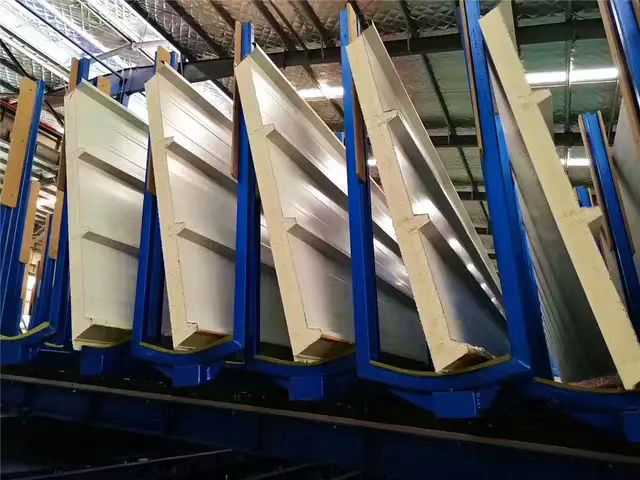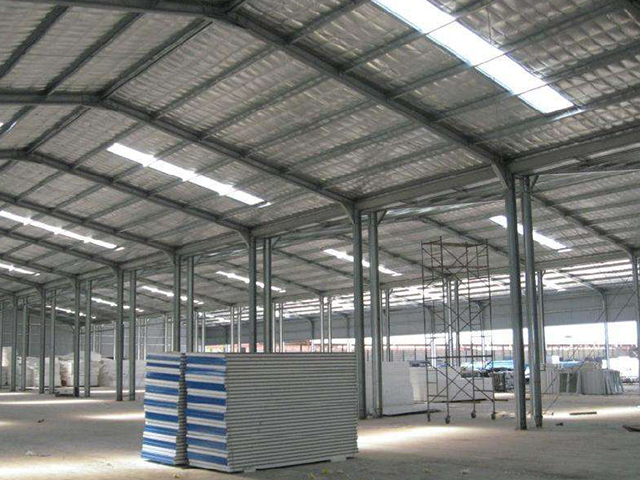Այսօրվա գլոբալացված աշխարհում սննդի մատակարարման շղթան սահմաններ չունի, ինչը ընդգծում է սննդի հետ պատշաճ վարվելու անհրաժեշտությունը: Սննդամթերքի պատշաճ պահպանումը ապահովվում է սառնարանային պահեստավորումով, ծագման վայրից մինչեւ սպառողի սառնարանը կամ խոհանոցային դարակը: Այս բլոգը կենտրոնանալու է սառնարանային պահեստավորման տեխնոլոգիաների եւ սննդի անվտանգության ապահովման օպտիմալ պրակտիկայի վրա:
Սառնարանների լուծումները
Սննդամթերքի պահպանման մեթոդներից եւ տեխնոլոգիաներից մեկը սառնարանային պահեստավորումն է, որը օգտագործվում է ցածր ջերմաստիճանում, որպեսզի խուսափի կեղտոտությունից եւ աղտոտվածությունից: Սենյակի ջերմաստիճանի վերահսկվող պահեստային միավորները, սառնարանային պահեստները եւ սառը տրանսպորտային միջոցները բոլորն ընկնում են սառը պահեստավորման կատեգորիայի մեջ: Սառցախցիկի հիմնական նպատակն է դադարեցնել սննդի անվտանգության համար վտանգավոր բակտերիաների եւ այլ պաթոգենների տարածումը: Տերմպորատորիայի ճիշտ կառավարումը նպաստում է բիզնեսին' երկարացնելով պահեստավորման ժամանակը եւ երաշխավորելով սպառման համար դրանց անվտանգությունը:
Դեպի առողջականության և համարձակ պաշտպանության մասին սառուցած խանգարումը
Աշխարհային Առողջավահարության Հանդիս (WHO)-ի հանձնաժողովածության, մոտ 600 միլիոն մարդ աշխարհում հավատում են համարձակ հանգիստից արդյոք ախտորոշված հավաքականից։ Սառուցած խանգարումը, հետևաբար, արդեն անհրաժեշտ է։ Կազմակերպությունները օգտագործում են ճիշտ ջերմաստիճաններով համարձակ պաշտպանություն, որպեսզի սահմանեն անտառ միկրոորգանիզմների՝ ինչպիսիք են «Սալմոնելլա» և «E. coli» աճը։ Ավելի նաև, սառուցած պաշտպանությունը շատ օգնում է համարձակի պաշտպանության մեջ նրանցից նուtrieնական արժեքների և որոշակիության պահպանման համար, որոնք պահում են և տալիս են սպասարկողներին անվտանգ և բավարար արտադրանքներ։
Սառուցած պաշտպանության ինդուստրիայի մեջ կիրառումը
Կուրսային պահեցման բաժնը եթեց մի քանի փոխակերպումներին տեխնոլոգիական զարգացումների պատճառով: Նոր ձևերի հուղարկման միջոցները նվազեցրել են դուրսգրումները և éliորենեցրել է էներգիայի օգտագործումը, որը նվազեցնում է կերպարների գործառույթային արժեքները: Սա, միասին IoT տեխնոլոգիաներով, որոնք ապահովում են պահեցման միավորների ներսում ջերմաստիճանի և տաքության մակարդակի հետևանքների հետևումը, անհեթեցնում է չհասնելու հավանականությունը՝ որը կարող է նำն գոնե սարսափելուն: Միասին, սύնթեկնական տեխնոլոգիան ապահովում է հուղարկման պայմանների իրականացող կառավարում:
Լավագույն պարագայումները կուրսային պահեցման լուծումների իրականացման համար
Սառնարանների պահեստավորման առավելագույն հնարավորությունը պահանջում է արդյունաբերության լավագույն փորձը: Սկզբում սառնարանային սարքավորումները պետք է պարբերաբար սպասարկվեն, որպեսզի ապահովվեն դրանց օպտիմալ աշխատանքը: Բացի այդ, աշխատակիցները պետք է կրթվեն սանիտարական պրակտիկայի եւ սննդամթերքի հետ վարվելու ընթացակարգերի վերաբերյալ, որպեսզի նվազեցվեն աղտոտման հավանականությունները: Վերջապես, պետք է իրականացվի պահեստային վերահսկման լավ սահմանված համակարգ, որը կվերահսկի արտադրանքի պահեստային կյանքը եւ օգտագործումը, որպեսզի նվազագույնի հասցնի սպառման ժամկետի սպառումը:
Արդյունաբերության միտումները եւ ապագա ուղղությունները
Սառնարանային պահեստավորման արդյունաբերությունը արագ զարգանում է՝ առավել ուշադրություն դարձնելով կայունության եւ արդյունավետության վրա: Սպառողները եւ կորպորացիաները ձգտում են կրճատել իրենց ածխածնի հետքը, ինչը օգնում է առաջադեմ տեխնոլոգիաներին, ինչպիսիք են արեւային հոսանքով սառնարանային համակարգերը, ինչպես նաեւ ջրային հոսանքով աշխատող կառույցները: Բացի այդ, COVID-19 համաճարակը մեծացրել է սառնարանային պահեստավորման լուծումների անհրաժեշտությունը ջերմաստիճանի վերահսկողության տակ գտնվող բժշկական արտադրանքների համար, ինչպիսիք են պատվաստանյութերը եւ այլ բժշկական պարագաները:
Կարճ գումարելով, լուծումը ներկայացնում է առաջնորդ տեխնոլոգիան և անհատական ինովացիաները: Այսօրի բարդ päستատունքի շղթայում, արդյոք պահումը կարևոր է համարվում ապրանքների ամանափոխության և անվտանգության համար: Համայնքի ուժերի և ապրանքի որակի կարող են շատ շարունակություն ստանալ ինդուստրիայի ինովացիաներից և լավագույն մասնագիտական մոտեցումներից:






